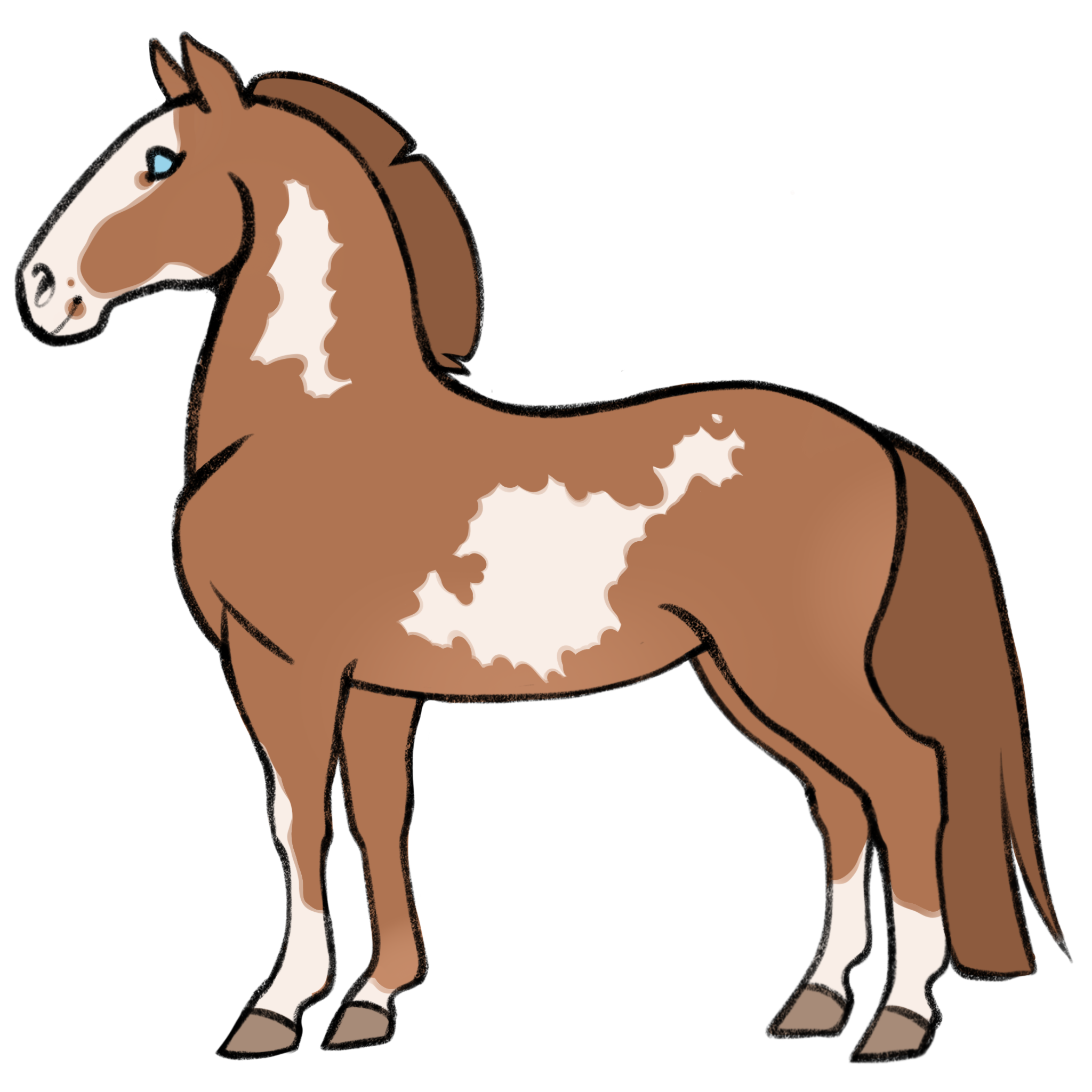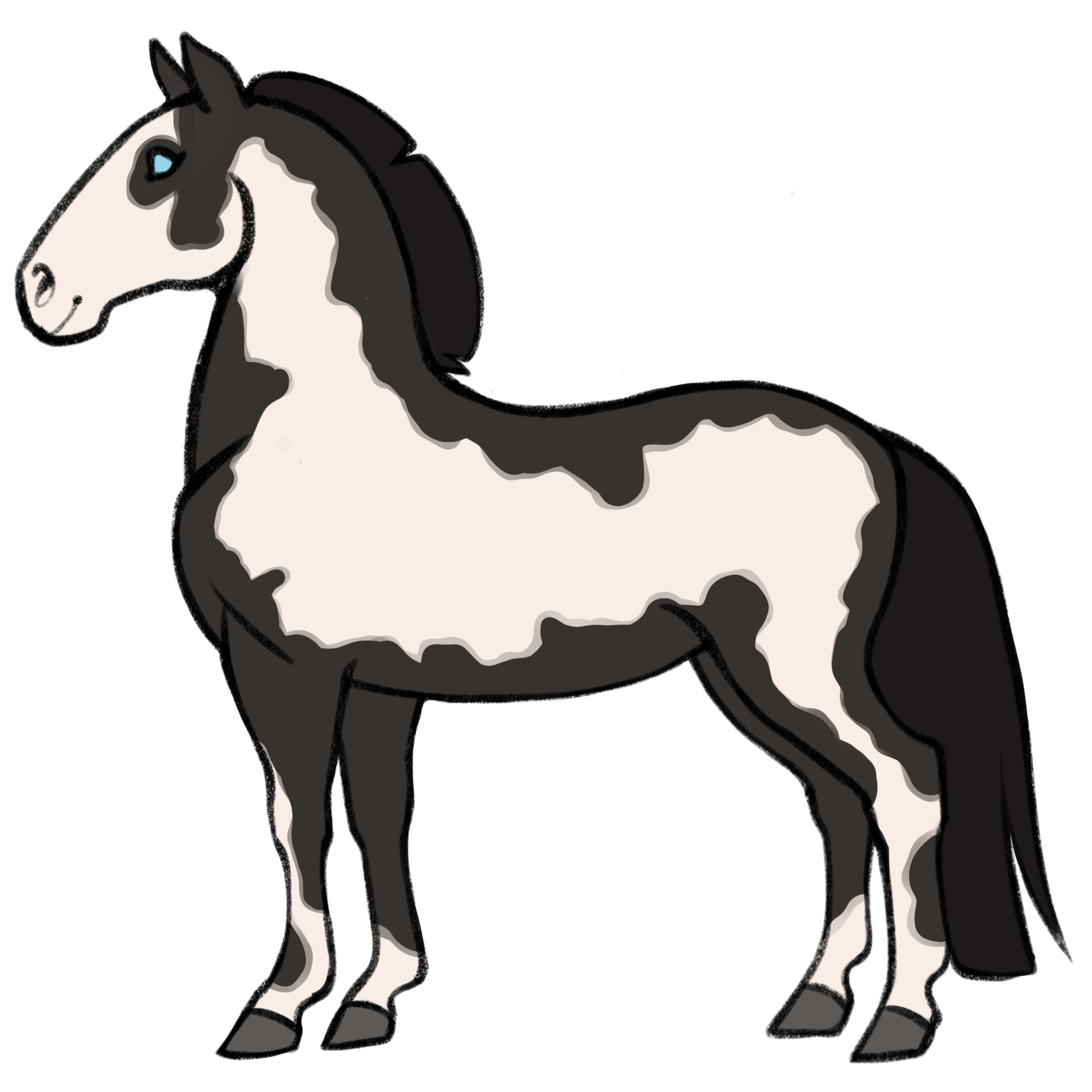Traits
(O_) overo (Natural)
Name: Frame Overo
Base Genotype: O_
Skin Color: Skin becomes pink under white markings.
Eyes: If a white marking touches an eye, it becomes blue. Heterochromia is common.
Description: Frame Overo causes jagged white patches to appear in the center of the horses body when viewed from the side, causing the white to look "framed" by the color of the base coat. Frame Overo by itself will never cross the back of the horse. Facial markings are usually large and striking. Baldface is common, as is "eyeliner" on baldfaced horses. Keep in mind that if a white patch turns the ears of the horse white, the horse is highly likely if not guaranteed to be deaf! Also, if two horses who carry overo are bred together, and the foal inherits both copies of overo, the foal will be marked as deceased due to Lethal White Overo syndrome. You won't get your breeding slot back, so please take care when selecting horses for breeding! Overo has a few variations when combined with tobiano, which can all be searched on for real-life references:
- "Tovero" : a horse that has both tobiano and overo
- "Medicine Hat" : a tovero horse that is all white, except for a dark patch ("hat") over the ears, and dark patches on the chest and/or flank ("shields.")
Design Guidance: At minimum, the horse may have white markings on the face, such as a snip, blaze, badgerface, or baldface; any facial markings are allowed, not just minimal natural facial markings such as with tobiano. At maximum, the white patch covers the entire side of the horse, but still does not cross over the horse's midline. Ears are rarely turned white, but it happens (and may cause deafness). The mane and tail will remain unaffected because overo will never touch the mane or tail, as they are on the midline of the horse. Skin becomes light colored where white patterns touch.
Examples of a chestnut overo with minimal markings, a bay overo with average markings, and a black overo with maximal markings.


